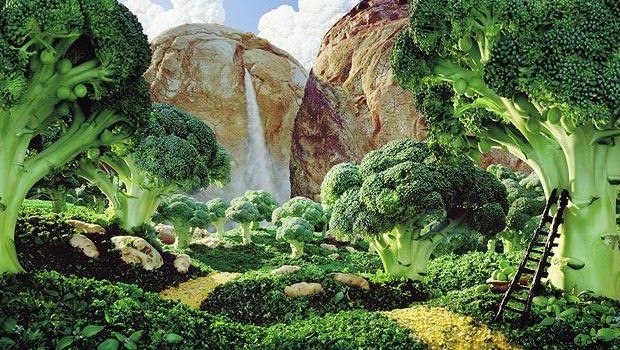
Have you ever thought of creating an edible forest in your garden? Also called forest garden, food forest and vegetable garden, the food forest is a versatile and multifunctional crop. As its name suggests, the latter is very productive, and rich in edible elements. It is a valid example of permaculture, based on the enhancement of the natural elements that compose it.
The edible forest can be created in a corner of the garden or in very large areas of land. You can also convert an existing forest or orchard.

An edible or food forest is a particular model of agriculture that provides for the creation, even in the city, of large areas for the growth of edible plants and fruits. It is a gardening or orchard/vegetable garden technique that simulates a forest ecosystem by growing on several layers:herbaceous, shrubby and arboreal.
In this type of forest, not only fruit species are grown, but also vegetables, aromatic species, medicinal plants and honey plants. We can therefore find everything we need for human and animal subsistence. Indeed, these aforementioned foods and plants provide benefits for human health, thanks to the vitamins and minerals they abound, after picking.
The minimum to achieve the edible forest is to implement three of the seven main levels:tall trees, medium trees, shrubs, herbaceous, rhizomatous, ground cover and climbers. It must obviously include at least one type of tree. The choice of plants that must coexist and create a suitable habitat by exploiting natural resources as it would happen in a real forest is fundamental.

A food forest can be created anywhere, in a very small piece of land or over large areas. As a result, the edible forest area becomes the center of activity for farmers, planting fruit and medicinal trees and then harvesting them once they produce. It is a very advantageous technique, since workers even stock up on it for their daily needs.
The principles of this type of culture aim to limit human intervention as much as possible. The space created is intended to satisfy human needs and at the same time the needs of ecosystems by seeking resilience, wealth and stability.
Having a food forest in the garden means reducing the high maintenance costs that a classic vegetable garden can have. However, being a reproduction of a forest, it is necessary to study the levels of vegetation choosing plants according to the place where we work. Having a forest garden means caring for an ever-changing ecosystem.
In the first design phase, it is essential to decide how the spaces will be managed according to the volumes. Do not imagine a perfect place, but rather a place where natural perfection is in effect.
Start thinking about the trees and edible species you would like to grow. Make a real list:nuts, apricots, figs, bay leaves, strawberries, blackberries, etc. With this list, think about the ecological contribution of each plant in your garden:ground cover plants for weed control, honey plants, trees for food production, shrubs for avifauna, horticultural plants, etc. You can also use plants for their aesthetic characteristics. Calendula, chamomile, borage, cornflower, chrysanthemum, sunflower and geranium are all edible flowers that will color your garden.

The efficiency of this type of forest is linked to the climate and energy changes that we are experiencing, since it is configured as a productive space, but at the same time resilient. That is to say, it is able to exploit the transformations of the climate and to self-regulate in periods characterized by alternating drought and abundance of water. This is also one of its great advantages.
However, it is still necessary and important to maintain in good condition the trees producing fruits and vegetables, as well as the trees of medicinal plants. Thus, reforestation or constant planting is the solution to preserve the beauty of the edible forest.
Each of us has a small ecosystem in the garden that can be expanded and exploited to create a resilient and ecologically stable space.